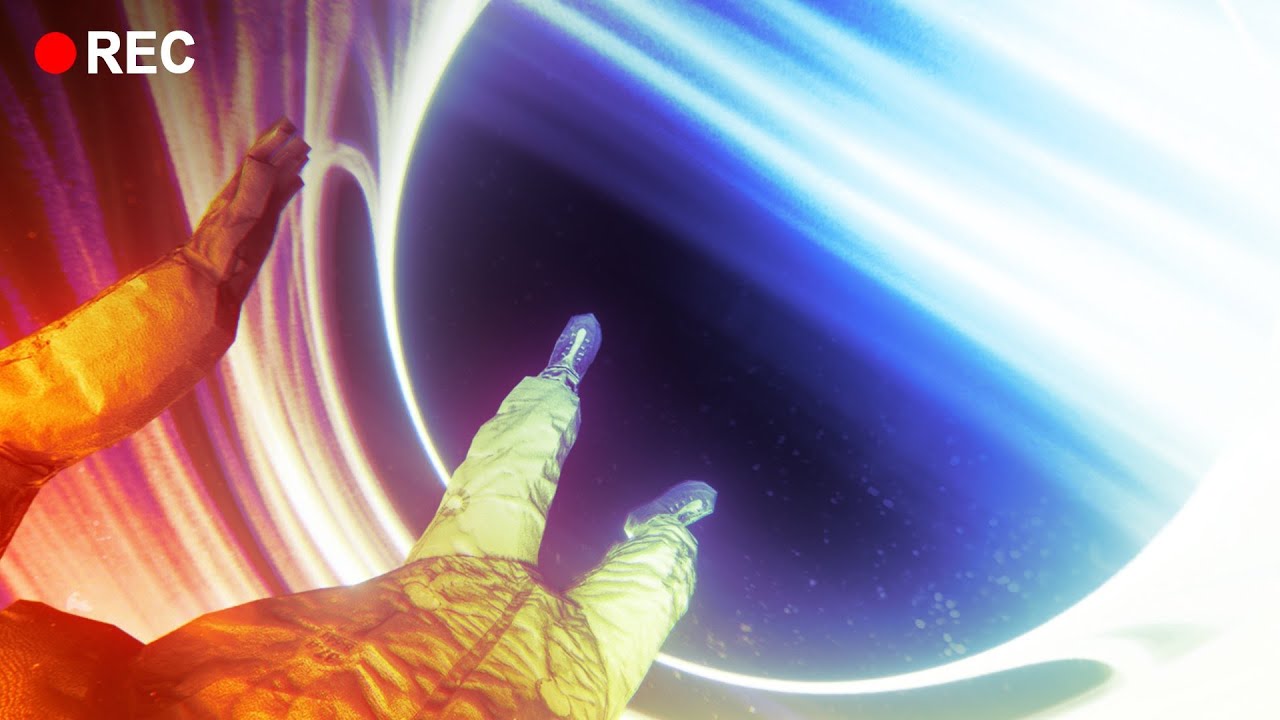probably depends on how big it is right? Smaller ones would just rip you up with tidal forces instantly, supermassive ones maybe you survive long enough to witness the end of the universe
turns out i was wrong, i didnt take into account the doppler effect and abberation of light.
probably depends on how big it is right? Smaller ones would just rip you up with tidal forces instantly
In regards to the smaller ones ripping you apart before you even cross the horizon, it has to do with the actual distance away from the singularity itself.
Supermassive black holes will give you a pretty lengthy amount of time to make peace with yourself once you cross the horizon. Stellar mass black holes, not so much.
Regardless of the mass, you will undergo spaghettification at roughly the same place, based on the proximity to the singularity.
I always wonder if two observers were falling towards two different black holes that were the same mass, would they percieve each other’s clocks passing the same? Presumably they wouldn’t be slowing down relative to each other, so long as they fell the same speed towards the same mass. Until at some they both cross the event horizon and shouldn’t be able to send signals anymore.
I always wonder if two observers were falling towards two different black holes that were the same mass, would they percieve each other’s clocks passing the same?
It would be roughly the same phenomenon as observing from the ship. Both persons would perceive the other’s clock slowing down as the light has increasing difficulty reaching the observer.
Presumably they wouldn’t be slowing down relative to each other, so long as they fell the same speed towards the same mass. Until at some they both cross the event horizon and shouldn’t be able to send signals anymore.
You said two different black holes, so there would be time dilation experienced by both when observing the other party. If they were falling together side by side towards the same black hole, their clocks would be basically identical and would experience time in the same way. Even after crossing the horizon, they’d be able to see eachother and interact up until they were spaghettified. This is because light can still move upwards relative to us, and reach our eyes, even if all space is falling faster than light. This was addressed in the video when talking about the local scale of spacetime below the horizon.
Also, do you eventually run into the light of the dying star that made the black hole before crossing the horizon? Cause it would’ve never crossed the horizon from your outside pov I think, or does it??? So I guess you’d be vaporized by that radiation if that’s what happens.
Everything that crosses the horizon remains on the horizon in the form of a still afterimage that becomes increasingly redshifted until becoming undetectable.
Some hypotheses suggest that hawking radiation could carry this information back out away from the horizon, but it’s only a theory.
The light of the dying star has already long radiated away from the black hole. Once the star becomes a black hole, there’s no way for all that light that already escaped to just become captured. See this video here to get a short visual explanation, by the same YouTuber.




